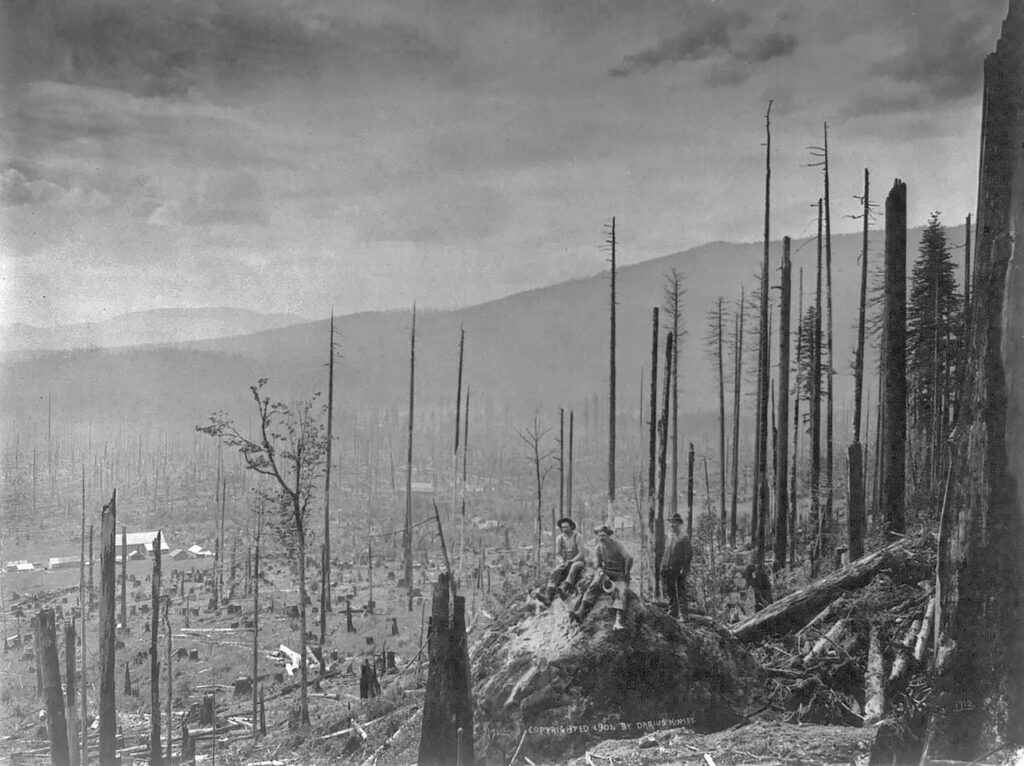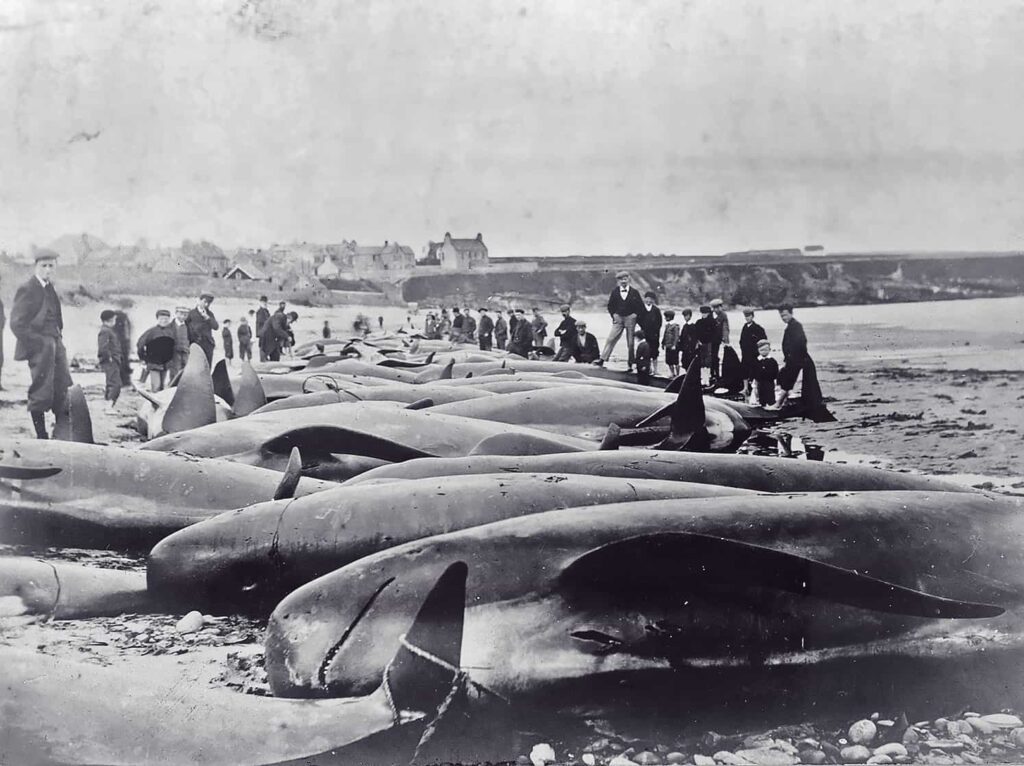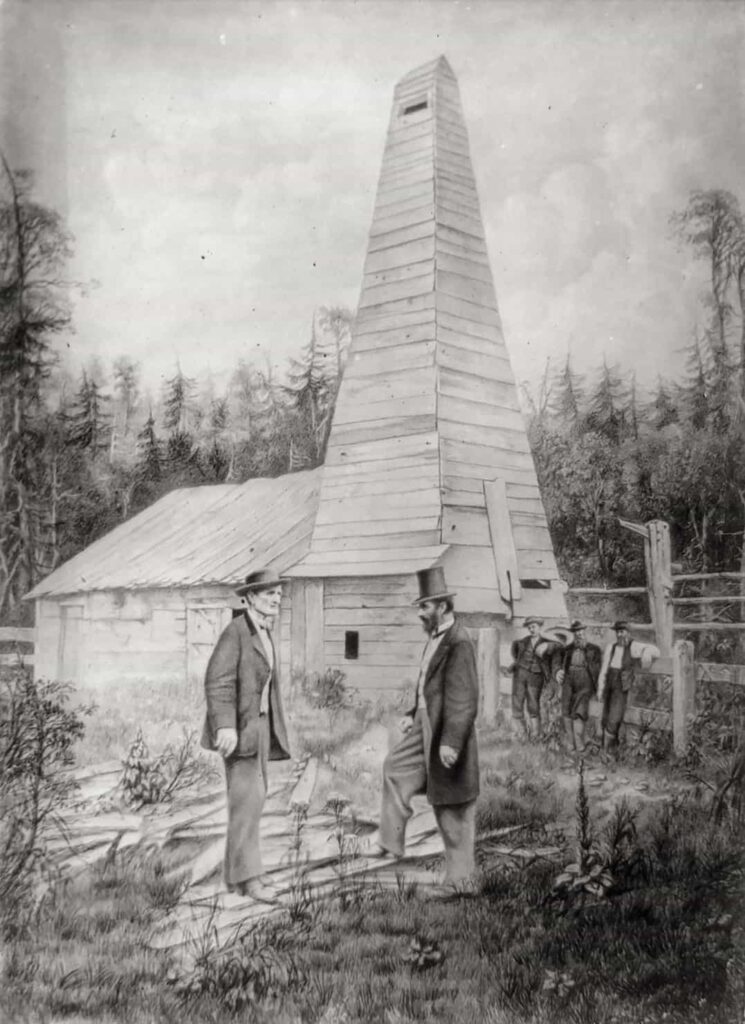Energy Transitions

Over time, energy use changes significantly. Bioenergy, such as wood, remained the dominant fuel from antiquity through the late 1800s. Starting around the Second Industrial Revolution in the mid-1800s, coal and petroleum production increased. Domestic and industrial users began widely adopting coal around 1850. In parallel, oil production started in earnest in 1859 in Titusville, Pennsylvania.
By 1885, coal surpassed wood as the primary fuel in the United States. Coal’s superior characteristics as a fuel and deforestation throughout the Upper Midwest and American Northeast contributed to the transition.
By most measures coal performs better than wood as a fuel. It has twice the energy density of wood at approximately 23 gigajoule per metric tonne (20 million British thermal units (Btu) per ton) of coal versus approximately 12 gigajoule per metric tonne (10 million Btu per ton) of wood, generates less smoke and ash, releases less carbon per unit of energy, and produces higher temperatures when burning. Metal making requires high temperatures, and coal’s qualities established a long relationship between coal and steel, for which the coal served as a source of both heat and carbon.


Although considered environmentally problematic today due to mining, emissions, and disposal concerns, coal helped save North American forests by slowing rates of deforestation. Similarly, the development of the petroleum industry helped eliminate commercial whaling. Today’s energy solutions often become tomorrow’s problems.
Petroleum use grew at about the same time as coal use, but much more slowly. Initially, petroleum consumption included only kerosene for illumination and polyolefins for lubrication. Similar to coal, petroleum became popular because the conventional fuel source—animal fats for lubricants and whale oil for lighting—became scarcer and more expensive.
While animal-fat lubricants would clog up industrial machinery, oil-based lubricants had less friction and better consistency over a wider range of operating temperatures and pressures. Similarly, kerosene burned longer and more brightly with less smoke and odor than whale oil.

Until 1950, petroleum use paled in comparison to coal and wood use in the United States. The advent of the internal combustion engine in automobiles, which transformed society near the start of the 1900s, provided an additional application for petroleum and led to its dominance today. For transportation, petroleum’s high energy density and liquid form, which made for easy handling and portability, yielded much better performance in terms of power and endurance than biomass, which was the conventional fuel for other forms of transportation.
These historical transitions from wood to coal to oil reveal three very important aspects: transitions take a long time; transitions have a distinct trend towards decarbonization; and there has been an unmistakable pattern of growth in energy consumption ever since the Second Industrial Revolution.

Image Credits: cosma/Shutterstock.com; Library of Congress/public domain.


